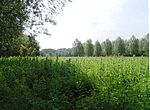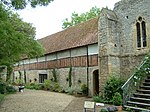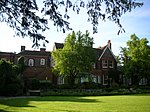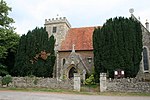Swift Ditch
Rivers of OxfordshireThames drainage basinUse British English from November 2017

The Swift Ditch is a 2 km (1.2 mi) long artificial channel that formed a short-cut for river traffic to and from Oxford, across a meander of the River Thames in England. It was formerly the primary navigation channel. With the main river, it creates Andersey Island on the left bank of the Thames opposite Abingdon-on-Thames. Within a poem published in 1632, the Water Poet John Taylor wrote:At Abingdon the shoals are worse and worse That Swift Ditch seems to be the better course
Excerpt from the Wikipedia article Swift Ditch (License: CC BY-SA 3.0, Authors, Images).Swift Ditch
South Oxfordshire Culham
Geographical coordinates (GPS) Address Nearby Places Show on map
Geographical coordinates (GPS)
| Latitude | Longitude |
|---|---|
| N 51.663611111111 ° | E -1.2702777777778 ° |
Address
OX14 3NN South Oxfordshire, Culham
England, United Kingdom
Open on Google Maps









